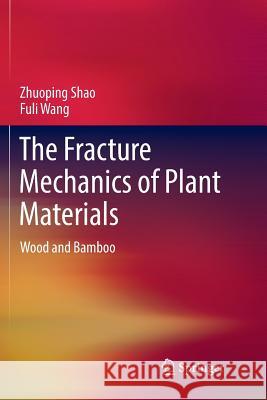The Fracture Mechanics of Plant Materials: Wood and Bamboo » książka
topmenu
The Fracture Mechanics of Plant Materials: Wood and Bamboo
ISBN-13: 9789811343001 / Angielski / Miękka / 2019 / 221 str.
Kategorie:
Kategorie BISAC:
Wydawca:
Springer
Język:
Angielski
ISBN-13:
9789811343001
Rok wydania:
2019
Wydanie:
Softcover Repri
Ilość stron:
221
Waga:
0.33 kg
Wymiary:
23.39 x 15.6 x 1.27
Oprawa:
Miękka
Wolumenów:
01
Dodatkowe informacje:
Wydanie ilustrowane











